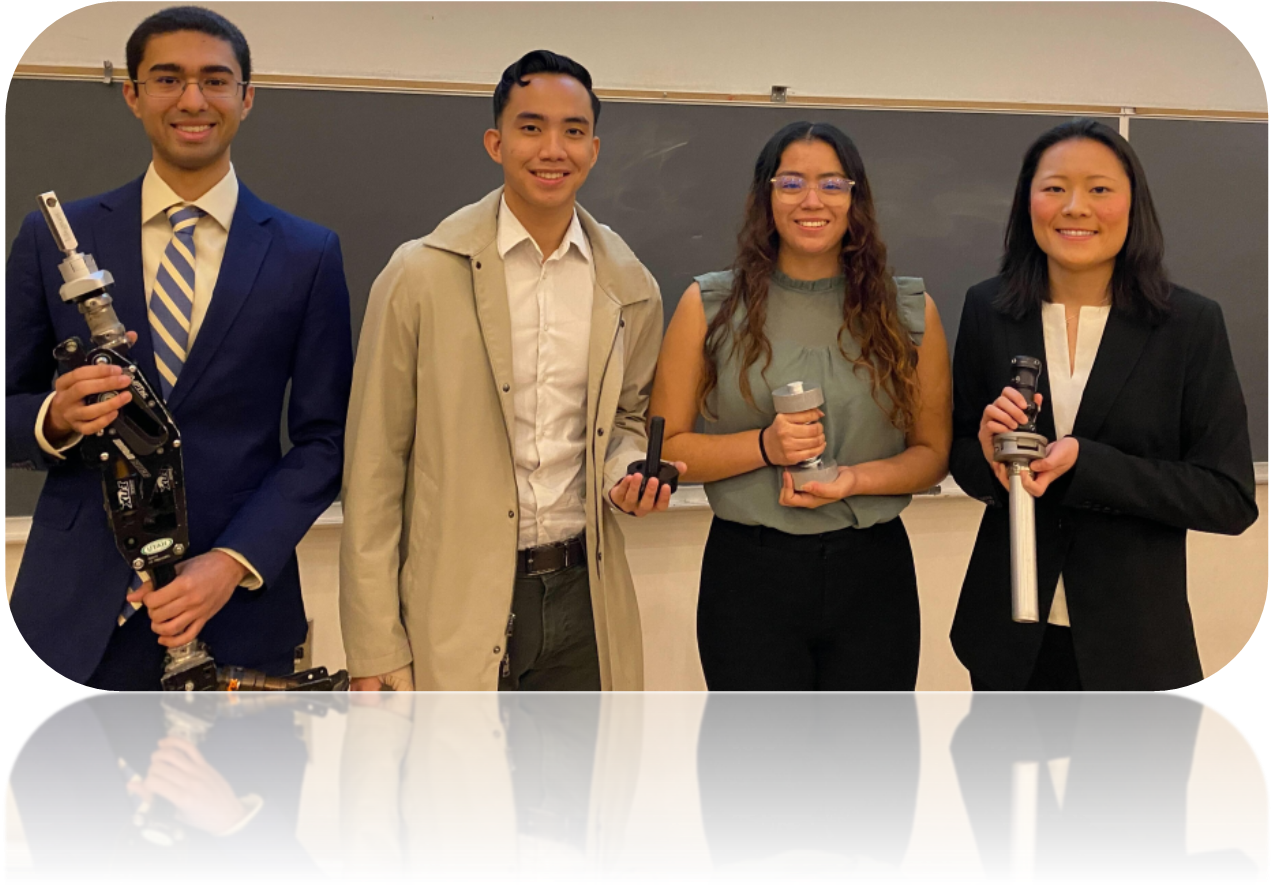Fabrication and Refinement of BreakaWAY Device for a Lower Limb Osseointegrated Prosthetic
Sonia Bautista, Marshall Mendoza, Christine Motz, Joseph Peluso
Advisor: Dr. Chris Danek & Dr. Greg
This project builds on a previous lower limb osseointegrated prosthetic device designed for Peter Way, a U.S. Army veteran who lost his leg in combat and has had multiple complications with traditional socket-wear prosthetics. This device seeks to give Peter the freedom to engage in his passion of mountain biking. However, osseointegrated prosthetics transmit stresses from the prosthetic to the bone, putting Peter at risk of fracturing his femur. Our team aims to take the proof of concept device produced by the first-generation BreakaWAY design team and turn it into a device which prioritizes comfortability, adjustability, intuitiveness, reliability, and safety. After testing the original BreakaWAY device, our team concluded it did not meet the established performance requirements. Our team then designed, built and tested many prototypes until we decided on a final design. The pin and springs design will allow Peter Way to regain his freedom to mountain bike.
Individualized Basketball Coaching Using Artificial Intelligence & Machine Learning
Sarthak Regmi, Regina Vahey, Alanso Johnson, Ryan Wong, Lenny Brown
Advisor: Dr. Chris Danek & Dr. Greg Behrmann
Born to Ball aims to aid basketball players who lack access to traditional coaching methods, whether that be due to financial constraints, lack of coaching availability, or insecurity of joining an advanced team. We are using a pre-trained object detection model named OpenPose capable of real-time detection of 135 key points on the human body on a single image. To analyze basketball free-throw shots, the features added to the model include shot detection, pose analysis, elbow and knee angles release time and wrist position. We are developing a mobile app for iOS and Android using Kivy, an open-source library for Python. Alongside the mobile app, we acquired the domain borntoball.net and are developing the website using Bluehost. The object detection model is trained with the Faster convolutional neural network (R-CNN) model architecture which includes pre-trained weight on common objects in context (COCO) dataset. The artificial intelligence and machine learning algorithm used to help basketball players improve their free throw shooting percentage can be expanded to other basketball applications as well as to other sports such as soccer, golf, and weight-lifting.
Launching a Drone for the Future
Kieran Doherty, Tannor Portland, Chedy Valdez, Carlos Alvarez Garcia, Elieser Moreira
Advisor: Dr. Chris Danek & Dr. Greg Behrmann
This engineering design and testing project will provide the groundwork for a Catholic University SUAS Drone Competition Team that will be able to compete effectively against other top engineering programs. We are developing a quadcopter with four motors and four propellers as an efficient drone type for this mission profile. The drone's designs are put to the test in two ways. One of them is using CAD modeling and simulation of stresses by finite element analysis. The second method includes physical testing of individual drone components during different stages of the design process. We also built a test stand that collects electrical power and thrust data on motor and propeller combinations, so any student team can design a drone to fit their own mission profile. This result will serve as a major connecting piece between teams from different years. In addition to the actual drone that we build, the outcome includes a foundation of engineering mission-driven design methods and test fixtures that will help future teams compete in national competitions and also promote The Catholic University of America's School of Engineering.
Accessibility in the Workplace: ORi System
Jefferson Ascencio, Peter Coene, Jeffrey Schriefer-Flores, Zachary Mueller, Gianny Teixera, Fatma Alshammari
Advisor: Dr. Chris Danek & Dr. Greg Behrmann
Visual Impairment is one of the top ten disabilities among adults 18 years and older. In fact, cases of blindness are expected to double by 2050. Our project is designed to benefit those with visual impairments and enable them to operate effectively around the workplace. We seek to develop a solution that can address the issue of easier navigation. We plan to use a transmitter and multiple receivers so that the user can identify the direction of desired objects, rooms, or spaces around their respective workplace. Current market solutions are expensive and unattractive. Our system seeks to reconcile the cost of such a device while maintaining an optimal performance for safe and efficient workplace navigation. This task is accomplished by simulating a user’s workplace environment that allows the engineering team to mimic typical distances of commonplace items and directions. While the current design is still in development, ultimately, we will produce a final design that allows individuals with visual impairments to improve their accessibility in the workplace.


